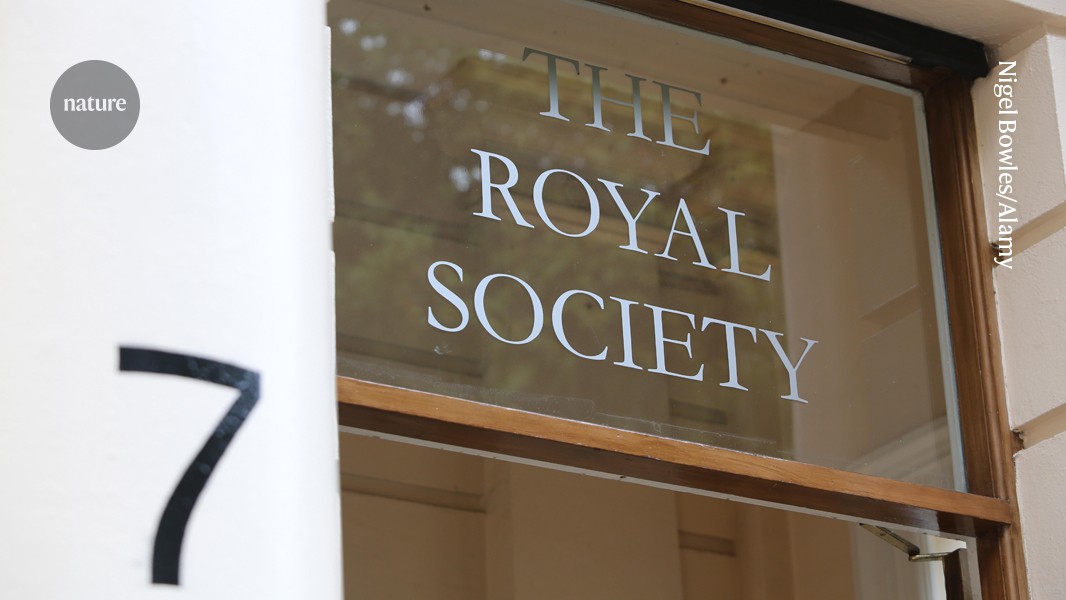UK Royal Society adopts ‘subscribe to open’ publishing model

Eight of its journals will publish papers open-access each year they earn sufficient library revenue

The Royal Society has been publishing more than half of its content open-access by charging article-processing fees.Credit: Nigel Bowles/Alamy
The UK Royal Society is converting eight of its journals to the ‘subscribe to open’ (S2O) publishing model, starting next year. The not-for-profit publisher, which produces ten titles, including the world’s first peer-reviewed journals, announced the decision today.
The S2O model makes the content a journal publishes on a given year free to access and publish, as long as enough libraries commit to paying an annual subscription fee. Without sufficient subscriptions, a journal will continue to charge publishing fees — known as article-processing charges (APCs).
In 2020, only 17% of articles published by the Royal Society were open access. That figure rose to 60% in 2024, but dropped to 55% for those published so far this year. The S2O model “is as clean and as simple a transition to open access as you can do. It gets us to 100% open access in one stroke,” says Rod Cookson, the Royal Society’s publishing director, who is based in Oxford, UK.
André Gaul, chief executive of EMS Press in Berlin, the publishing house of the European Mathematical Society, calls the Royal Society’s announcement “a fantastic move” and hopes that more publishers will follow suit.
If there are not enough subscriptions to cover the publication costs, the Royal Society will continue charging APCs and try again in 2027. The society’s two remaining journals will continue to be published under the APC-based open-access model.
Joining a movement
The Royal Society is joining a growing wave of scientific publishers that are implementing the S2O model. This year, 378 journals are published under this model — up from 192 last year.
Annual Reviews, a non-profit publisher in San Mateo, California, pioneered the model with five journals in 2020. By 2023, all of its 51 journals had switched to S2O.
EMS Press was one of the early publishers to follow suit. They trialled the model with 10 journals in 2021, and expanded it to all 22 journals by 2024. The publisher currently has just under 1,600 subscribers from 58 countries.
“So far, we found it to be very sustainable, because it repurposes traditional library spending. There’s no additional budget needed. There’s no kind of extra component on top of what they’re already spending,” says Laura Simonite, head of business development at EMS Press.
EDP Sciences, a publisher in Les Ulis, France, also began its S2O programme in 2021. It now publishes seven journals under the model, including its largest one, Astronomy & Astrophysics; Radioprotection; and six mathematics journals.
In 2023, EDP Sciences had to keep Radioprotection paywalled because subscriptions did not reach the threshold needed for S2O. The publisher said that “this decision was not a failure of the model, but rather a result of its conditional nature”. With renewed subscriptions and extra financial support from the French Society for Radioprotection, the journal became open access again last year.
The publisher also struggled to keep its six mathematical journals open access this year. But it received financial backing from the French Society for Applied and Industrial Mathematics and France’s National Centre for Scientific Research, allowing the journals to remain free to all.
For Astronomy & Astrophysics, “the sustainability of this model is precarious, and required a very strong collaboration with [the journal’s] executive board to maintain open access”, says Selina La Barbera, the journal publishing director at EDP Sciences.
Enjoying our latest content?
Login or create an account to continue
- Access the most recent journalism from Nature's award-winning team
- Explore the latest features & opinion covering groundbreaking research
or
Sign in or create an accountdoi: https://doi.org/10.1038/d41586-025-02483-0
This story originally appeared on: Nature - Author:Miryam Naddaf

















